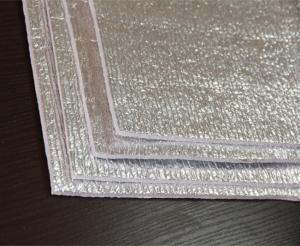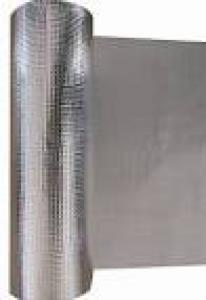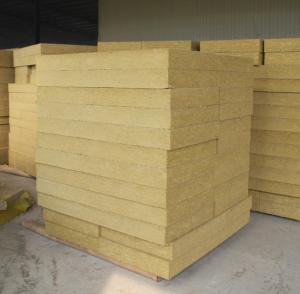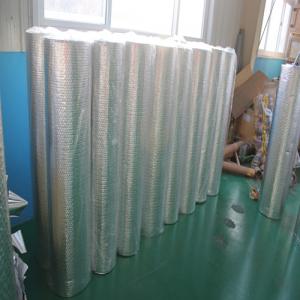Roofing Insulation Reflective Bubble Wrap - Aluminum Foil Coated Bubble Insulation Type 16
- Loading Port:
- Shanghai
- Payment Terms:
- TT OR LC
- Min Order Qty:
- 10000 cm³
- Supply Capability:
- 100000 cm³/month
OKorder Service Pledge
OKorder Financial Service
You Might Also Like
Bubble Insulation Benefits:
Reflects 96% of radiant heat
Non-toxic / Non-carcinogenic
Does not require protective clothing or respirators to install
Durable and lightweight
Does not compress, collapse or disintegrate
Vapor and radon retarder
Easy to cut and install
Permanent and maintenance-free
Does not provide a growth medium or nutritive value for fungus, insects, or rodents
Does not support the growth of mold or mildew
Not affected by moisture or humidity
Lowers heating and cooling costs year round
Bubble Foil Application:
Metal & Steel Buildings
Homes
Roof Underlayments
Cathedral Ceilings
Crawl Spaces
Hot Water Heaters
Basement Walls
Floors
Garage Doors
Concrete slabs
Driveway snow melts
Pole barns
Post frame buildings
Poultry barns
Animal kennels
Temperature sensitive storage areas
Air Bubble Foil Insulation Tech Data:
Material Structure: AL/Bubble/AL | ||
Bubble Size:D10mm*H 4mm(10*2.5/10*4/10*6/20*7/25*10)choose the bubble size | ||
Bubble Weight:0.13kg/m2 ( can be customized ) | ||
Roll Width:1.2m (lenth can be customized) | ||
PROPERTIES | TEST DATA | UNIT |
Thickness | 3.5-4 | mm |
Weight | 250 | g/m2 |
Emissivity | 0.03-0.04 | COEF |
Thermal conductivity | 0.034 | w/m0 |
Apparent Density | 85 | kg/m3 |
Reflectivity | 95-96 | % |
Water Vapour Transmission | 0.013 | g/m2kpa |
Corrosion | doesn't generate | |
Tensile Strength(MD) | 16.98 | Mpa |
Tensile Strength(TD) | 16.5 | Mpa |
- Q: No insulation was installed under roof of my 2 story home. Im not rich but looking for info on installing about 450 ft. up there.
- If there is no existing insulation you need a vapor barrier 1st or you need "faced" fiberglass, the one with either plastic or brown paper on it. I put it as thick as you can afford.
- Q: I live in central florida. I plan on installing R-30 insulation to the floor of my attic. How effective is it to install reflective insulation to the attic on the roof side? Is it worth the price?
- do not insulate your roof,it will cause the roof to get VERY hot,this will damage the roofing,shorten its life,,the temp in your attic should be within 3-4 deg of outside temp,,,insulate the floor Only and have plenty of ventilation
- Q: what's the best insulation for ceilling for house with semi flat roof?
- The pitch of your roof has nothing to do with the kind of insulation you should use. I recommend a fiberglass insulation that is at least 6 inches thick, the more you put in the better.
- Q: What is the aim of insulation in walls and in roofs?
- Proper insulation is designed to keep you comfortable in al sorts of weather. In the winter it reduces your utility bills by keeping the cold outside where it belongs. It does the opposite in summer. It keeps the heat out. Learn all about it here.
- Q: Hi, I have got a physics question and was just wondering about it.. Can someone pls tell me how does roof insulation work? how is it effective? How does the insulation changes the heat circulation and transfer inside a house?I know that the insulation prevents radiation from the sun and overheating.. but any more details about radiation, convection and conduction of heat pls?
- Well insulation makes a dead air space (air is stagnant). Since the air is not moving the transfer of hot and cold is slowed down considerably. But since you have to create cross ventilation to reduce rotting in wood and the build up of explosive gasses. Its a crap shoot that it even does any good. Radiation is heat so that's covered by the dead air space. Convection is usually not an issue with the cross venting. Also for conduction the insulation should slow it down considerably.
- Q: House is a bi-level. Recently added storm windows to deck off dining room. Having a new rubber roof installed would like to know if we can insulate ceiling to make the room warmer. What product do you suggest we use. we are getting conflicting answers, some say you can insulate others say the ceiling needs to breath having a rubber roof install. Please advise.
- Your other answerer is correct. The little plastic pieces that he speaks of are sometimes called baffles. They look like they are corregated or wavy like the inside of cardboard. These are essential to letting air flow in the attic space. Another item that you must have are vents on the soffits or overhangs on either side of the roof. Air has to get in there somehow. There are alot of homes that are not ventilated properly and the roof decking or plywood gets discolored and rots from the inside out. Sometimes this can happen in as little as 5 years, depending on your geographical location. Rubber roofing is usually put on a flat roof system. If you do not have access to inside the framing, you cannot insulate or it will be very difficult to get insulation in there properly. There are so many variables with different houses and locations. You may want to ask an insulation expert from the phone book or even a home inspector. Good luck.
- Q: The attic was converted into two rooms and I want to add insulation but the space between the ceiling of the rooms and the roof is about 5 inches? How should I do this?
- It sounds like you will have to use blown insulation. They will drill holes in the walls to blow the insulation in. Over time, this type of insulation will drop down or compress; so you will have to top it off over time. You might also add acoustical tile to the exiting ceiling to add a little more insulating value.
- Q: What can i do to add more insulation in a addition in my house?The Roof is flat on this addition (no attic room for insulation there).Looks like it's only 4 or 5 inches thick, starts from the inside with 1/2 inch drywall and the rest is plywood, and then that black sheeting on the outside.IS THERE ANYTHING MORE THAT CAN BE DONE TO ADD MORE INSULATION ON THE OUTSIDE?, (i can't do anything on the inside since the ceiling is already low) SINCE IN THIS ROOM IS VERY HOT, even touching the celing feels warm, PLEASE HELP!
- You could build a pitched roof on top of the flat roof.
- Q: fixing my room up and it gets hot in summer so i want to put some good insulation in the roof so what could i use?
- if you are going to put in insulation put in the roll kind. it will be very easy and less expensive
- Q: What are the roof insulation materials?
- Polystyrene foam is divided into expansive EPS and continuous extrusion type XPS two: polystyrene board full name polystyrene foam board, also known as foam board or EPS board
Send your message to us
Roofing Insulation Reflective Bubble Wrap - Aluminum Foil Coated Bubble Insulation Type 16
- Loading Port:
- Shanghai
- Payment Terms:
- TT OR LC
- Min Order Qty:
- 10000 cm³
- Supply Capability:
- 100000 cm³/month
OKorder Service Pledge
OKorder Financial Service
Similar products
Hot products
Hot Searches
Related keywords




























